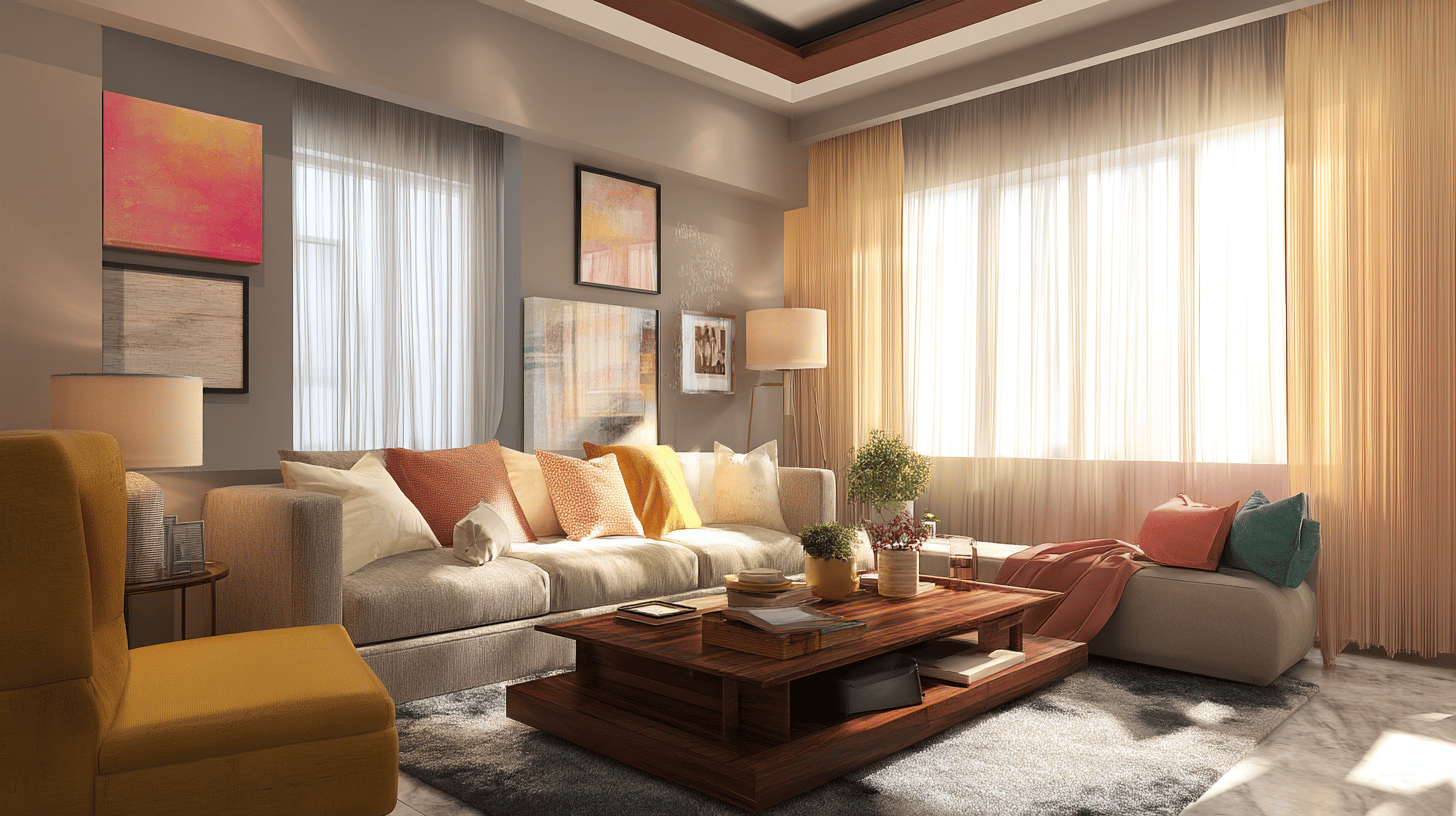Home decor is more than just a matter of aesthetics; it reflects who we are and how we feel in our space. A cozy, well-designed space not only beautifies the home, but also improves our well-being. In this article, we will explore how to create spaces that are both functional and welcoming. Practical tips, trend analysis and decor insights will be covered to transform your home into a true haven.
Understanding coziness
Before you start making physical changes to your home, it’s important to understand what a cozy environment means. This concept varies from person to person, but generally involves:
– Comfort: Furniture that welcomes and invites you to relax. – Style: An aesthetic that resonates with your personal preferences. – Functionality: Spaces that meet your everyday needs, making life easier.
Creating a welcoming environment involves finding a balance between these elements. Let’s take a look at how you can do this.
1. The Importance of Lighting
Lighting plays a critical role in the atmosphere of any space. Instead of relying solely on fluorescent lights, which can be harsh and uninviting, try incorporating different light sources:
– Ceiling Lights: Choose lighting fixtures that combine style and functionality. Pendant lights can be not only useful, but also a great focal point for your decor. – Natural Light: If possible, maximize natural light by keeping windows clean and using light-weight curtains that allow light to pass through. – Ambient Light: Add table lamps and floor lights to create a relaxing atmosphere, especially in reading or relaxation areas.
2. Choose Comfortable Furniture
When choosing furniture, think about how it will suit both style and comfort. Sofas and chairs should be cozy, and tables should be at appropriate heights for practical use. Also consider:
– Space to Retire: A reading corner can be enhanced with a comfortable armchair and a small bookshelf. – Multifunctional Solutions: Furniture that performs more than one function, such as sofa beds or coffee tables with storage, helps save space and offers versatility.
3. Use of Textures and Materials
Varying textures in a room can create depth and interest. Consider combining different elements:
– Textiles: Use pillows, blankets and rugs of different textures. This not only provides comfort but also visual appeal. – Natural Materials: Incorporating elements of wood, stone or even plants can bring a touch of nature and tranquility to the space. – Cozy Tones: Warm, soft colors, such as earth tones or pastels, promote a calmer, more inviting environment.
4. Space Personalization Adding a personal touch to your home makes all the difference. Consider:
– Art and Decoration: Hang artwork, family photos, and other decorative items that have special meaning to you. This not only adds style, but also creates a space that tells your story. – Objects of Feeling: Why not include souvenirs from your travels or items that remind you of good times?
5. Organizing and Simplifying
An organized environment is a welcoming environment. Take some time to evaluate what you have and how you can optimize your space:
– Discard the Excess: Evaluate the need for each item and donate or discard what is no longer used. Fewer items means less clutter and greater clarity. – Creative Organization: Use boxes, baskets, and shelves to keep things organized and accessible. – Maintenance Routines: Establish a cleaning and organization routine. A constantly tidy home makes the space more welcoming.
6. Outdoor Inviting Environments
Don't forget that outdoor spaces also require comfort and warmth. If you have a garden or balcony:
– Outdoor Furniture: Comfortable and sturdy furniture helps to extend the use of outdoor space. – External Lighting: Soft lights added to the outdoor area create an inviting ambiance at night. – Green and Nature: Plant flowers, herbs or even have a small vegetable garden; the presence of plants brings a sense of calm and beauty.
7. Flexibility with Style The style of your home should be flexible and adaptable to changes in your life. Consider:
– Seasons: Changing out seasonal accents (like pillows or throw pillows) can breathe new life into a space without major renovations. – Personal Changes: Over time, our tastes change. If a new style resonates with you, look for ways to gradually incorporate it.
8. The Role of Music
Creating a pleasant sound environment should not be underestimated. Soft music, wellness playlists or even the sounds of nature can completely transform the atmosphere:
– Setting the Tone: Put on a playlist you love while you’re at home. Music can positively influence your mood. – Creating Sound Zones: In a larger home, consider different types of music for different areas, creating diverse environments.
9. Take Advantage of Its Versatility
Finally, recognize that a home can serve multiple purposes. It can be a space for work, exercise, relaxation, and entertainment. Therefore:
– Create Dynamic Spaces: Think about how spaces can change throughout the day. For example, a home office might have an adjoining relaxation corner. – Flexibility in Furniture: Use folding tables or stackable chairs to allow for easy transitions between work and relaxation.
Conclusion: The Final Touch
Transforming your home into a welcoming and functional space is an ongoing process. By incorporating elements that promote comfort, organization and personalization, you not only improve the aesthetics, but also the quality of life. Start with small changes and see how they can have a significant impact.
Want to share your own experiences or decorating tips? Leave your comments and inspire other readers to create the home of their dreams. Also visit other blog posts for more insights on how to make your home an even more special space!


